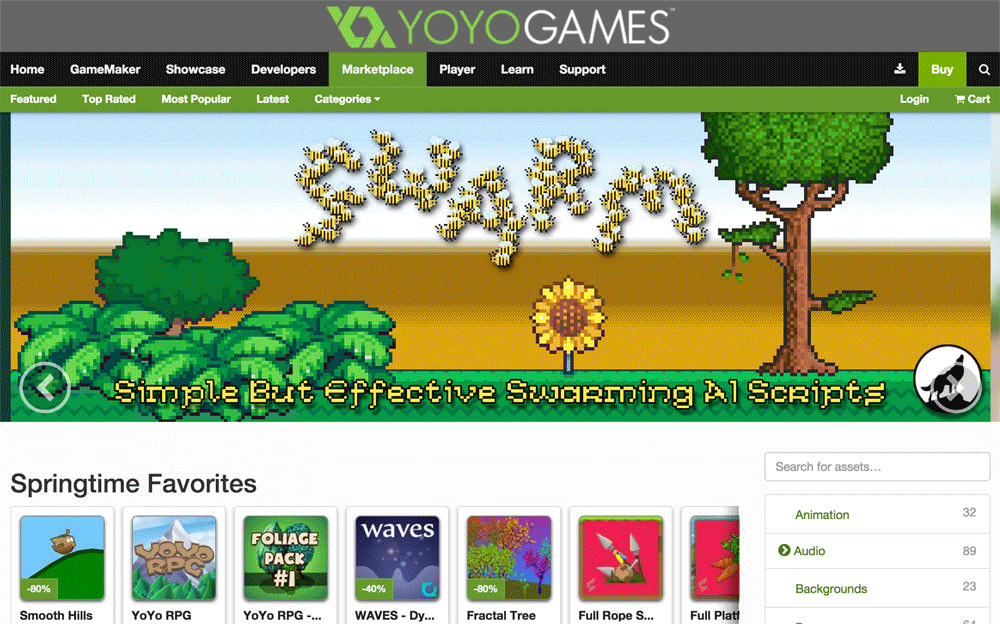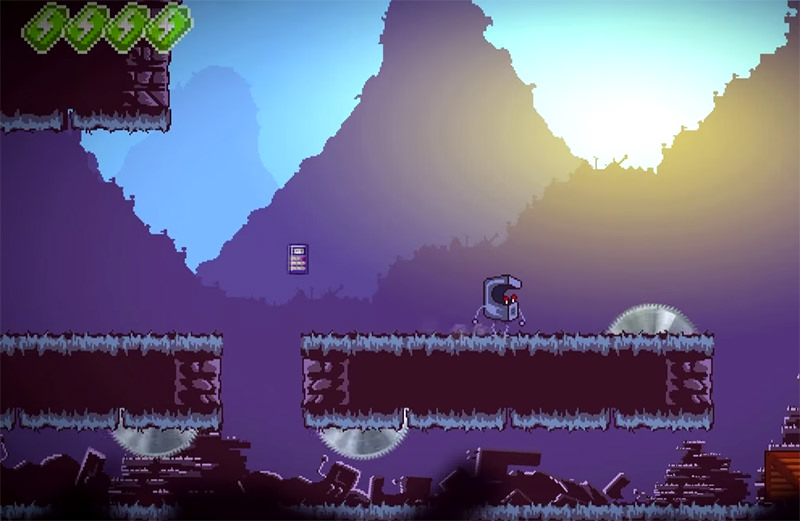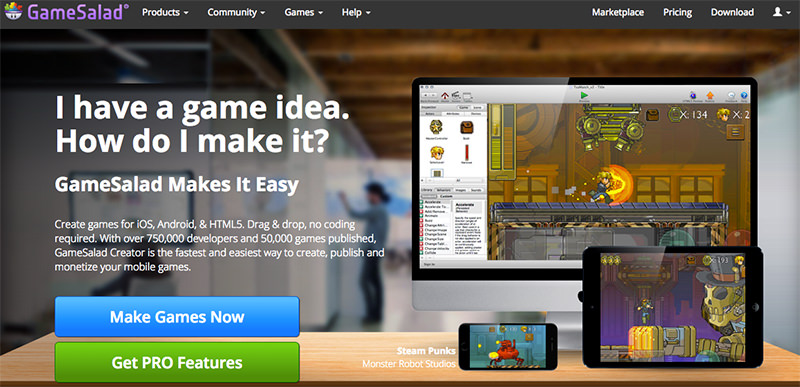How to Create a Game Without Any Coding Knowledge
Remember when only those with fancy handheld devices like GameBoys or consoles could enjoy games? Times have changed. Nowadays, from youngsters to grandparents, anyone with a laptop, desktop, smartphone, or tablet is diving into the world of gaming.
Gaming has evolved from being perceived as a “time-wasting activity” to one of the leading sources of entertainment and profit. With this shift in perspective, countless new games emerge daily, produced both by renowned companies and independent creators. And guess what? Profit drives this surge in game creation.
The most surprising part? Not all game creators are coding experts. Yes, you read that right. You too can design games without delving into any code!
Understanding Game Builders
My passion for games directed my educational and career choices. I pursued programming in college, dreaming of creating my own game – “Pokemon Rainbow”. Yet, an intriguing fact awaits.
Believe it or not, you don’t need coding skills to develop games similar to Pokemon, Zelda, Harvest Moon, Flappy Bird, first-person shooters, zombie-themed games, and many others.
Enter the realm of game builders – software designed for individuals like us. These intuitive platforms allow users to simply drag, drop, and assign tasks to objects. The beauty of game builders is their ability to eliminate the need for coding.
How do they achieve this? The genius minds behind game builders have already embedded all potential game movements within the software. Your role? Simply select the desired pre-set action and bring your vision to life.
Essentials to Begin Your Game Creation
While game builders simplify a lot of the groundwork, such as developing characters or environments, there are still certain aspects you should consider beforehand.
1. Crafting the Game’s Storyline
What’s the central theme of your game? Who are the primary characters, and what drives them?
Begin by sketching out a narrative for your game universe. This narrative should encompass both protagonists and antagonists. It doesn’t have to be extensive.
For instance, take Super Mario Bros.: the game doesn’t delve deep into character personalities, but it offers a clear goal. Mario is on a quest to find the Princess, who’s always in another castle. Why? Bowser abducted her! It can be as straightforward as that.
2. Setting the Game Mechanics
How does your game universe operate? Does it mimic real-world physics, or does it have its unique mechanics? It’s crucial to establish these rules early and stay consistent with them.
Consider factors like the number of lives or health points your character starts with. What happens upon their demise? Do adversaries respawn? How about the leveling system? Are foes capable of defying gravity by wall-jumping?
Essentially, you’re defining the boundaries of what’s achievable in your game, ensuring clarity when you begin the actual development process.
3. Gathering Necessary Game Assets
A comprehensive game typically includes the following elements:
- Graphics – Ever come across a game devoid of visuals? Graphics significantly influence a game’s appeal. High-quality visuals are often a player’s preference, so you might want to invest in designing distinctive characters, backgrounds, effects, and more.
- Soundtrack – Audio, including background scores, sound effects, and voice-overs, plays a pivotal role in gaming. It’s hard to think of a hit game that’s completely mute!
- Patience – This is essential. Given that game builders cater primarily to non-coders, expect a lot of point-and-click action.
After laying down your story, rules, and assets, the next step is to choose a suitable game builder. The advantage with most game builders out there is that they often come with free versions, allowing you to experiment before opting for a premium edition.
Always remember: It’s wise to try before you buy!
Top Game Creation Platforms
In my quest to find the best game builders for this article, I explored several options. The following three stood out as the top contenders. While all of them offer free versions for HTML5 game publishing, their pro versions provide capabilities to launch your games on iOS, Android, and Windows.
Let’s delve into GameMaker, Construct 2, and GameSalad.
1. GameMaker
GameMaker is undeniably a frontrunner among game building platforms, boasting an array of dynamic features. From physics and map development to character design, GameMaker addresses almost all facets of game creation. Its free edition even enables enthusiasts to design and play games on their desktop.

The primary drawback to GameMaker? The hefty price tag. While the free version is impressive, transitioning to a premium plan for Mac, iOS, and Android publishing can be a pricey affair: approximately $440 for iOS and Android.
Nonetheless, when it comes to comprehensive game creation tools, GameMaker truly shines.
Games Created Using GameMaker:
Are you familiar with Steam? Below are some games either currently available on Steam or greenlit for future releases:
A modern rendition of the classic “defend the earth from extraterrestrial invaders” gameplay.

A vast RPG universe awaits exploration. Tailor your characters, advance levels, and join up to 3 friends in real-time gameplay.

This fantasy isometric puzzle offers a rich array of challenges. With its compelling storytelling and distinctive allure, it’s a treat for gamers.

2. Construct 3
With its sleek design, Construct 3 stands out as a premier game builder in today’s market. Its clean, uncluttered interface ensures that game creation can be a breeze, even for beginners. When juxtaposed with GameMaker, Construct 3 emerges as both more user-friendly and more budget-friendly, priced at $129.99. It also offers diverse publishing options including Mac, Windows, Linux, iOS, Android, and Wii U.

One striking advantage of Construct 3 is its intuitive user interface. It focuses on user experience, ensuring the inclusion of actions and events is a seamless process.
Games Developed Using Construct 3:
It might surprise you, but many games on platforms like Google Play Store, iOS App Store, and even Steam are products of game builders like Construct 3. The catch? Not many developers admit it. The reasoning? Why share a valuable trade secret that game building can be remarkably straightforward!
Step into an action-packed racing adventure set in an expansive universe. Players traverse various planets in search of Ulysses.

Join the captivating journey of an animated arcade game cabinet on its mission to amass game cards.

Experience a unique twist in gaming as you step into the shoes of a zombie, chasing humans for a delectable feast!

3. GameSalad
GameSalad is yet another intriguing game building platform that allows users to craft games without delving into coding. However, unlike GameMaker and Construct 3, GameSalad operates on a rental model. For those eager to dip their toes in, a pro membership at $29/month offers a viable avenue.

While GameSalad brings to the table all the essential tools, its primary limitation is the duration of the trial. Users can only sample the basic package for a brief 15 days. Additionally, unlike many other platforms, GameSalad doesn’t offer an option to purchase but rather relies on a monthly subscription model.
Games Crafted Using GameSalad:
Steam Punks integrates the best of action platforming with RPG elements, reminiscent of legendary titles like Mega Man and Metal Slug.

Little Saw
Delve into a captivating platformer where a tiny protagonist ventures across numerous levels, confronting the myriad challenges of its environment.

Fun Town
Designed with young learners in mind, Fun Town is an educational game. Whether it’s assembling a burger, nurturing a plant, embarking on a shopping spree, pedaling a bicycle, or exploring over a dozen other mini-games, Fun Town ensures both learning and fun.

Sourcing Game Assets
Feeling a surge of inspiration but unsure about your abilities in character design or background creation?
Fret not! Here are some online repositories to help you acquire essential design assets. From game art, character design, and sound files to background scenes and music, these platforms have got you covered.
- GSHelper: Recognized as GameSalad’s official marketplace, GSHelper offers an expansive range of professional artworks and music pieces.
- Scirra Marketplace: As the official marketplace for Scirra – the minds behind Construct 2 – this platform presents a plethora of game art and soundtracks available for a nominal fee.
- GraphicRiver: Home to over 1500 game assets, GraphicRiver is a veritable treasure trove for game developers.
- GameTexture: Ideal for those on a budget, GameTexture provides free game assets. However, do ensure to review the usage license.
- Freesound: A platform dedicated to enhancing the auditory appeal of games through free music clips.
- AudioJungle: Diversify your game’s soundscape with a rich assortment of sound effects, music, and more. After all, memorable games often have unforgettable soundtracks.






Game Over, What’s Next?
With your game ready to shine, the subsequent step involves marketing it. If you’re seeking guidance, this article offers valuable insights on boosting app downloads. Alternatively, you can also visit Reddit and invite users to test your game.
Kindness goes a long way! If you have a marketing budget, consider promoting your game through Facebook Ads. Reaching out to gaming blogs for features or reviews is another effective strategy.
So, what’s brewing in your mind? What game genre are you contemplating?